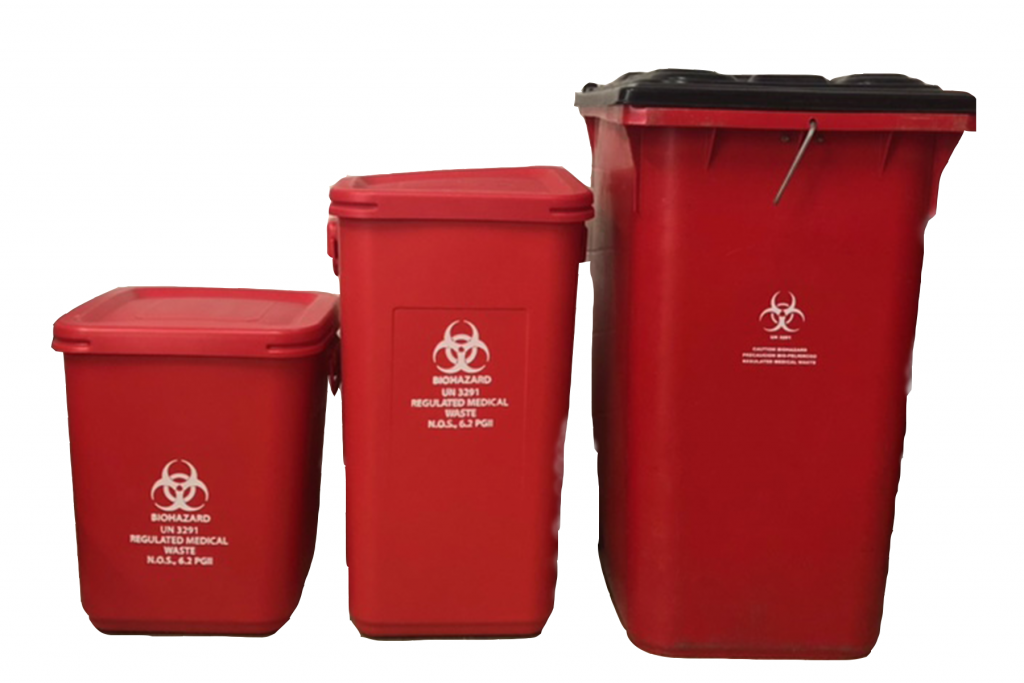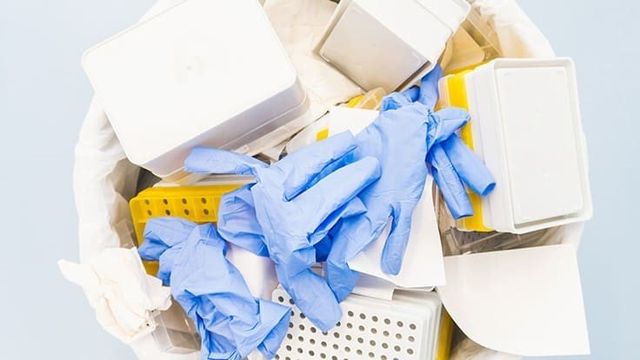Guardians of Tidiness: Resident Medical Waste Removal Service for Your Satisfaction
Guardians of Tidiness: Resident Medical Waste Removal Service for Your Satisfaction
Blog Article
Keep Ahead of Regulations: Specialist Recommendations on Medical Garbage Disposal
In a world where the healthcare market is continuously developing, it is critical for clinical centers to stay in advance of guidelines when it comes to the correct disposal of clinical waste. From recognizing the different groups of clinical waste to executing the right collection and partition methods, this discussion will certainly supply beneficial insights and actionable tips to help centers remain in advance of regulations in the ever-changing landscape of clinical waste disposal.
Comprehending Medical Waste Categories
Recognizing clinical waste categories is necessary for appropriate disposal and monitoring in healthcare centers. Clinical waste refers to any kind of waste created by medical care tasks that may pose a hazard to public health or the setting. It is important to categorize medical waste properly to guarantee its secure handling, transport, treatment, and disposal.
There are a number of groups of clinical waste that healthcare centers need to be acquainted with. The most usual groups include contagious waste, pathological waste, sharps waste, pharmaceutical waste, and chemical waste. Each classification has details standards and policies for its proper administration and disposal.
Pathological waste refers to human cells, organs, or body parts that require special handling and disposal. Pharmaceutical waste makes up ended, unused, or contaminated drugs that require cautious handling and disposal.
Staying Up-To-Date With Regulatory Adjustments
Staying existing with governing changes is crucial for medical care centers to ensure conformity and appropriate management of clinical waste disposal. medical waste removal. With guidelines constantly evolving, it is essential for health care facilities to remain updated to stay clear of charges, penalties, and prospective injury to the atmosphere and public wellness
To stay in advance of governing modifications, health care centers must establish a system for tracking and monitoring updates. This can be done by signing up for governing e-newsletters, participating in conferences and workshops, and proactively taking part in market organizations. Furthermore, facilities must assign an employee or group in charge of remaining informed and sharing details to relevant stakeholders.
Normal communication with governing firms is likewise important. Medical care facilities should establish relationships with neighborhood, state, and federal agencies to ensure they know any type of modifications in guidelines that may influence their waste administration practices. This can be done with routine meetings, participation in public comment durations, and aggressive interaction with regulatory firms.
In addition, medical care centers need to take into consideration partnering with waste monitoring firms that concentrate on clinical garbage disposal (medical waste disposal services with WasteX). These firms are typically well-versed in the most current policies and can provide assistance and assistance to ensure compliance
Applying Appropriate Collection and Segregation Techniques
To efficiently take care of clinical garbage disposal, healthcare centers must develop proper collection and partition methods according to governing standards. Executing these methods makes certain the safe handling and disposal of possibly dangerous products, protects the atmosphere, and decreases the danger of injuries and infections to medical care workers and the general public.
Correct collection and partition approaches entail making use of assigned containers and identifying systems. Healthcare facilities ought to provide clearly identified containers for different sorts of medical waste, such as sharps, transmittable waste, pharmaceutical waste, and non-hazardous waste. These containers need to be color-coded and plainly marked to stay clear of confusion and advertise simple identification.
Additionally, medical care centers should train their team on the proper procedures for collecting and setting apart clinical waste. try here This includes educating them on the different kinds of waste, the ideal containers to utilize, and the importance of adhering to laws and guidelines. Normal training sessions and refresher course training courses ought to be carried out to make certain that team participants stay up-to-date on finest techniques.
In addition, health care facilities ought to establish a system for routine collection and disposal of medical waste. This may involve partnering with licensed waste monitoring business that focus on medical waste disposal. These firms will ensure that the collected waste is transferred and disposed of in conformity with regulatory demands.
Choosing the Right Disposal Methods

Incineration is just one of one of the most efficient and usual techniques for taking care of specific types of clinical waste, such as pathological waste and sharps. It entails the controlled burning of waste at heats, decreasing it to ash. Incineration can launch hazardous toxins into the air and add to air contamination.

Other disposal techniques include chemical treatment, microwave treatment, and landfilling. Chemical treatment involves using chemicals to decontaminate and reduce the effects of the waste. Microwave treatment utilizes microwave power to warm and disinfect the waste. Landfilling involves hiding the waste in a marked garbage dump area (medical waste disposal services with WasteX). Landfilling should be the last resort due to the prospective danger of contamination to dirt and groundwater.
Making Sure Conformity Via Documentation and Training
After meticulously considering the suitable disposal approaches for medical waste, health care centers need to make certain conformity with policies and lessen ecological impact by implementing effective paperwork and training procedures. This step is critical in maintaining a secure and sustainable setting for both medical care workers and the public.

Training is just as crucial in making sure conformity with policies. Health care employees who deal with clinical waste should get suitable training on waste segregation, handling, and disposal treatments. This training should cover subjects such as the correct use personal protective tools, identification of various sorts of waste, and the right disposal methods for every waste category. By giving extensive training, medical care centers can encourage their personnel to make informed decisions and reduce the danger of incorrect garbage disposal.
Conclusion
In final thought, remaining ahead of laws in medical waste disposal is crucial for health care centers. medical waste removal near me. Understanding the different groups of medical waste, remaining upgraded with regulatory modifications, applying proper collection and segregation approaches, choosing the ideal disposal methods, and making sure conformity via documents and training are all vital informative post actions. By adhering to these standards, health care companies can efficiently get rid of and manage of clinical waste in a liable and risk-free manner
From understanding the various classifications of clinical waste to executing the right collection and segregation methods, this conversation will certainly give beneficial insights and actionable pointers to aid centers remain in advance of regulations in the ever-changing landscape of clinical waste disposal. - medical waste disposal services with WasteX
The most common classifications include infectious waste, pathological waste, sharps waste, pharmaceutical waste, and chemical waste. Health care centers need to offer clearly classified containers for various types of clinical waste, such as sharps, transmittable waste, pharmaceutical waste, and non-hazardous waste. Healthcare centers must develop a thorough system to tape and track all elements of clinical waste disposal, including types of waste created, quantities, and disposal techniques utilized. Healthcare workers that take care of clinical waste needs to obtain suitable training on waste segregation, handling, and disposal procedures.
Report this page